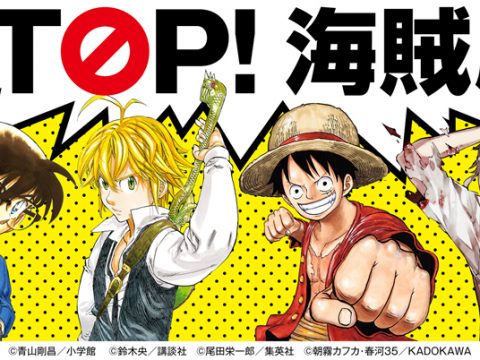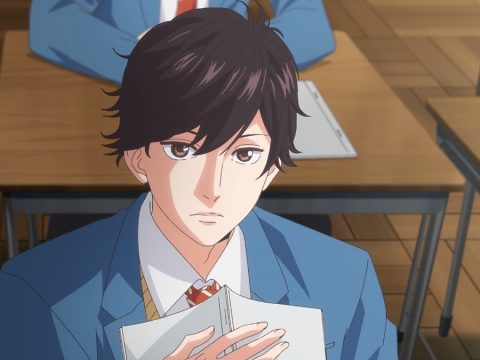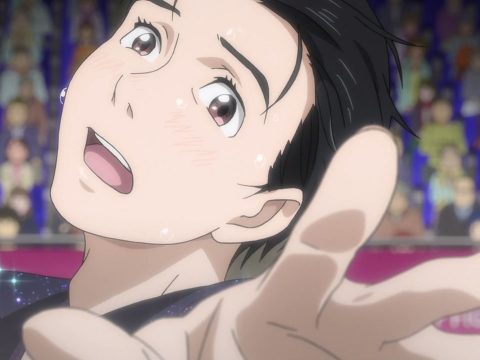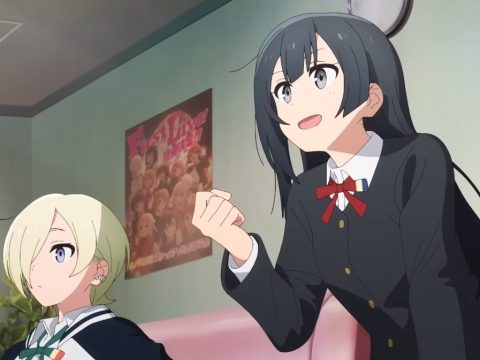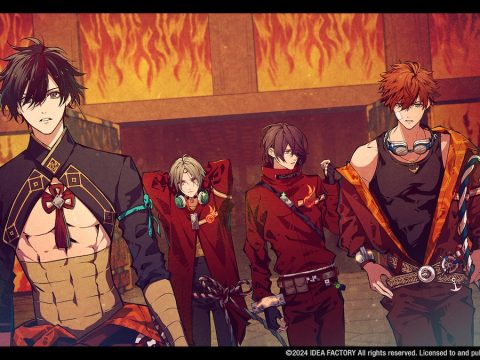
Kujibiki Unbalance is a strange series in ways that have little to do with the actual content of the book. In some kind of bizarre metaverse, the very manga I just finished reading exists solely by “cartoon laws,•bCrLf is discussed solely by cartoon characters, and holds the interest of giant anime eyes all over the cartoon college nerd circuit. Surely you can understand why my brain is so broken, then, because logic dictates that all of this makes ME a cartoon!
It’s not quite that drastic, though. Kujibiki Unbalance got its start in the fictional world of Kio Shimoku’s Genshiken, and enjoys mixed critical responses from the otaku therein. In the “parent•bCrLf series, storylines and characters from Unbalance are constantly referenced, something that eventually lead to the actual production of some of those episodes. Therefore, the manga is an adaptation of a pseudo-fake anime that• okay, my mind really is broken now. Let’s just talk about the comic.
 What we have here is another school comedy/drama in a world that runs on the fuel of such stories like a bottomless pit of coal. So what separates lead character Chihiro Enomoto’s school life from that of the thousands of pint-sized protagonists that preceded him? Well, for starters, Rikkyoin High is a very, very strange school. Here, the word of the Student Council is law—their influence running deeper than you can imagine—and decisions within and regarding the council are all made via a lottery known as a kujibiki, which basically involves drawing slips of paper from a box.
What we have here is another school comedy/drama in a world that runs on the fuel of such stories like a bottomless pit of coal. So what separates lead character Chihiro Enomoto’s school life from that of the thousands of pint-sized protagonists that preceded him? Well, for starters, Rikkyoin High is a very, very strange school. Here, the word of the Student Council is law—their influence running deeper than you can imagine—and decisions within and regarding the council are all made via a lottery known as a kujibiki, which basically involves drawing slips of paper from a box.
The lottery’s power is so all-encompassing that they even use it to decide future leaders of the council, from the Treasurer to the President. That’s where Chihiro comes in. Along with a few other quirky kids, he somehow ends up on the “lucky•bCrLf end of the lottery, drawing the President slip with absolutely zero preceding expectations. Why so skeptical, Chihiro? That would be a result of his chief character trait: chronic bad luck. And hey, maybe the nasty streak isn’t over, because he soon finds out that the work involved in becoming a council successor is serious business• deadly serious.
What transpires for the rest of the volume is a series of tasks that are far from average. Chihiro and co. find themselves constantly racing against the clock, defusing bombs, and even getting stranded on an island, far away from the intended vacation destination. All of these scenarios are pretty action-oriented, and Koume Keito’s art is really attractive, if slightly over-screentoned. There’s so much tone in this book that I don’t even know where the artist ends and the assistant begins.
It’s a quick, light read that spins a decent off-kilter school yarn, and can surprisingly stand on its own feet without depending solely on the Genshiken fanbase for attention. In fact, there’s absolutely no sign that this is what it is outside of the Genshiken-referencing translation notes and Kio Shumoku’s story credit on the cover, though I’m sure I missed a ton of obscenely overt references to the series.
If this title really existed on its own as an original piece (or, wait, it does), I’d probably criticize it more heavily for all the moe stuff and the “sexiness•bCrLf that, both in character actions and wardrobes, can often ruin some potentially sweet moments. Otherwise, it’s a good time that will find the heartiest homes in the bellies of Genshiken fans and scientists eager to study the reference-addled brains of comic fans within comics within comics within•
Publisher: Del Rey
Story: Kio Shimoku
Art: Koume Keito
Rating: T 16+



